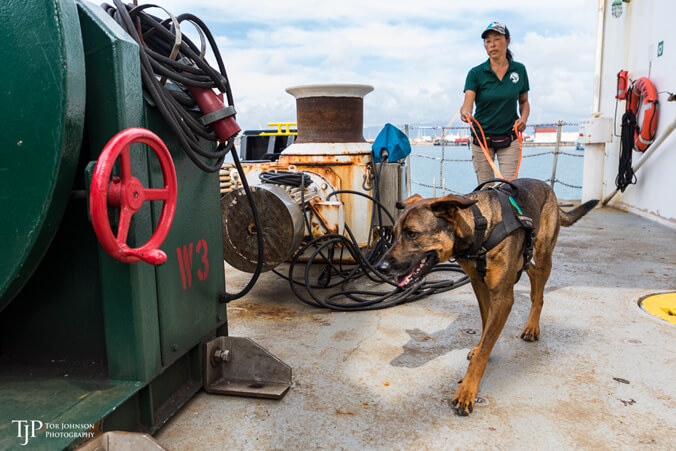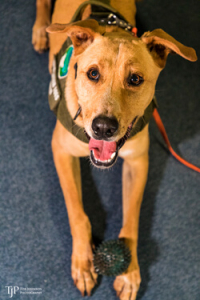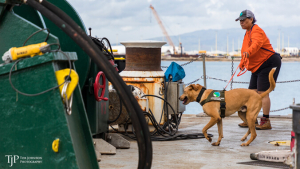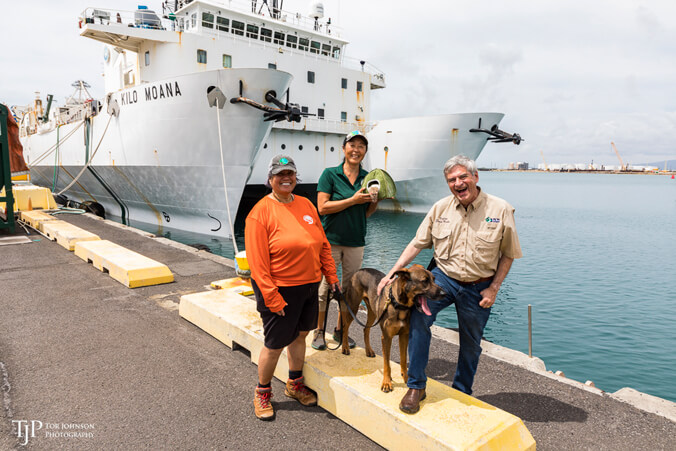
Canine trainees and their handlers from Conservation Dogs of Hawaiʻi, boarded the docked University of Hawaiʻi research vessel Kilo Moana at the UH Marine Center recently to test and hone their skills to aid conservation and biosecurity missions.

The dogs and their trainers practiced using scent to seek out pet rats that had been brought on board. The teams simulated search efforts to ensure incoming cargo is free from invasive species, such as rodents or insects. In the small spaces and steep stairways of the R/V Kilo Moana, the teams were challenged in an environment unlike other training locations.
“The variety of conditions we encountered was really educational for us and the dogs,” said Kyoko Johnson, trainer and founder of Conservation Dogs of Hawaiʻi,. “The engine room and pantry are humid, for example, and the electrical room and other areas provided an opportunity to practice navigating tight spaces.”
Having previously been a dog trainer, Johnson got involved in working with dogs for ecological purposes when she was hired to work at a wind farm on the North Shore of Oʻahu to detect bat and bird carcasses. As she learned more about scent detection and observed the dogs’ love for this type of work, she expanded the application of this approach.
K9 training could lead to expanded roles
Johnson, other trainers and the dogs have since conducted missions to find invasive species such as devil weed or endangered seabird nests in high-elevation sites.

“In the future, we’d like to collaborate with state or federal agencies on biosecurity to prevent invasive species from going to Papahānaumokuākea Marine National Monument or the Pacific Remote Islands,” said Johnson. “When ships and planes visit sensitive ecosystems, our dogs can do thorough inspections to ensure they aren’t introducing harmful species, such as yellow crazy ants, an invasive ant that sprays formic acid and can hurt bird chicks. Prevention of an infestation is more straightforward and significantly less expensive than eradication.”
The trainers with Conservation Dogs of Hawaiʻi continue to train their dogs to prepare for a variety of field surveys.
“The UH Mānoa School of Ocean and Earth Science and Technology is dedicated to serving our local communities through innovative and creative ideas to promote the sustainability of our native species,” said Anita L. Lopez, director of research vessel operations at the UH Marine Center. “Utilizing canines in the detection and elimination of invasive species onboard vessels allows the prevention of transferring these species into very sensitive and critical habitats both inter-island and remote islands across the Pacific. It was a true pleasure to work with and provide a training platform for this team of talented individuals and animals that are on the frontline of protecting our Hawaiian ecosystems.”
–By Marcie Grabowski


